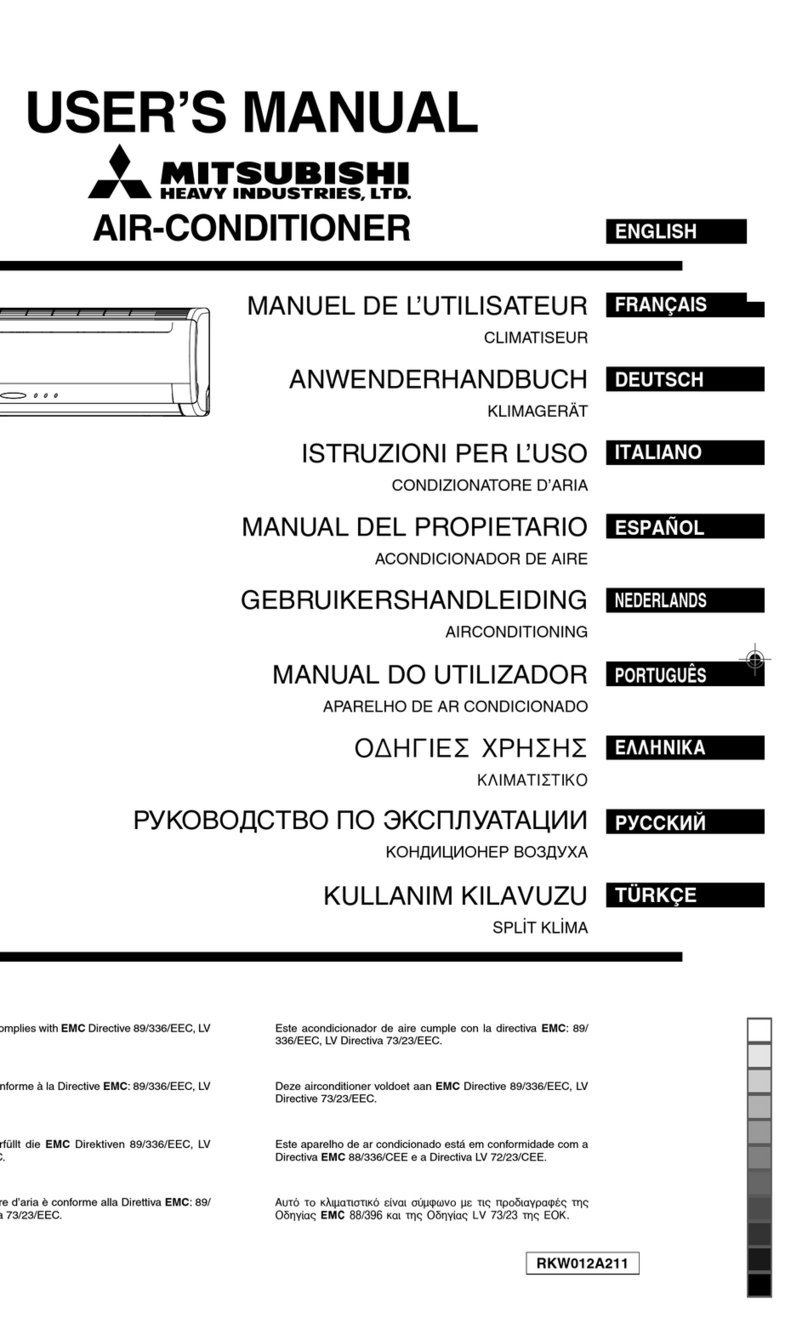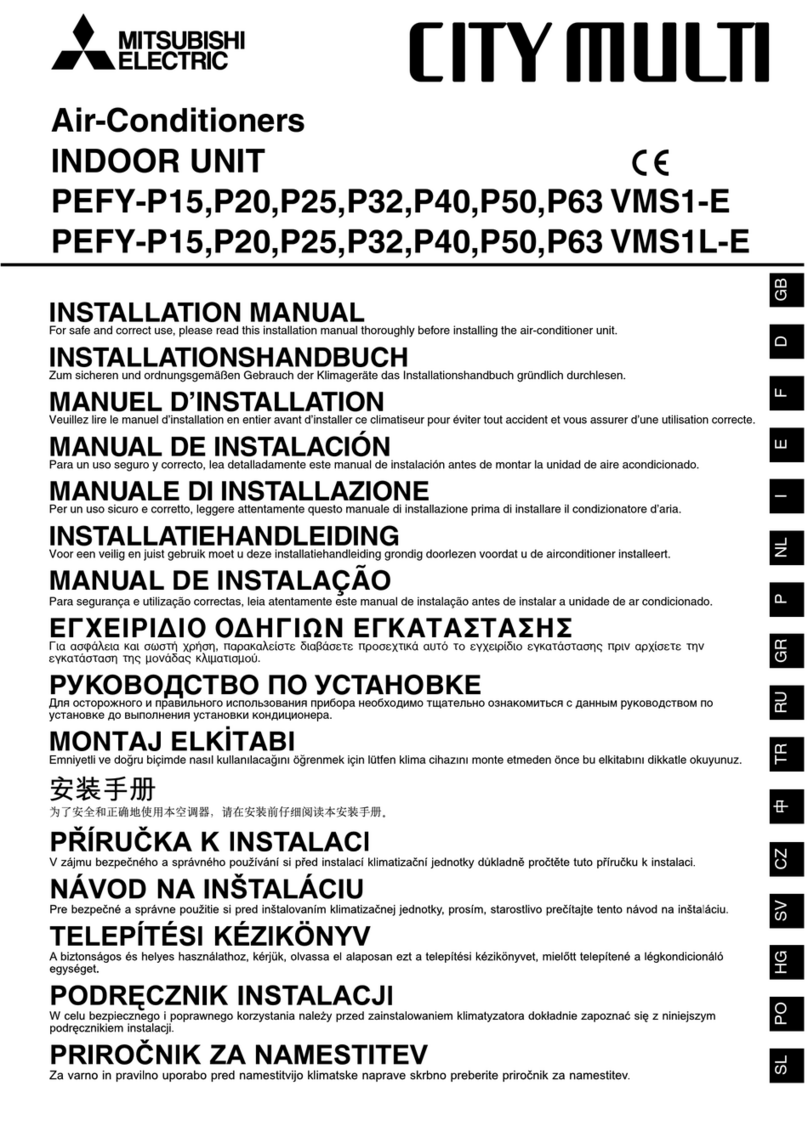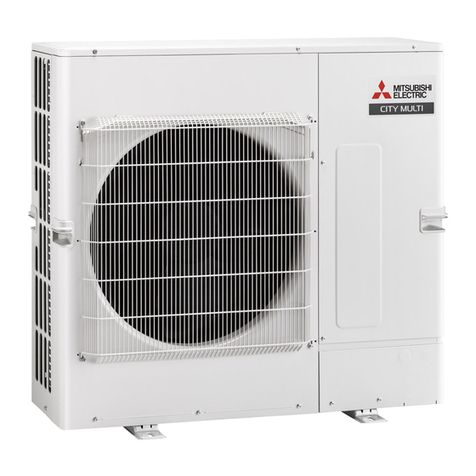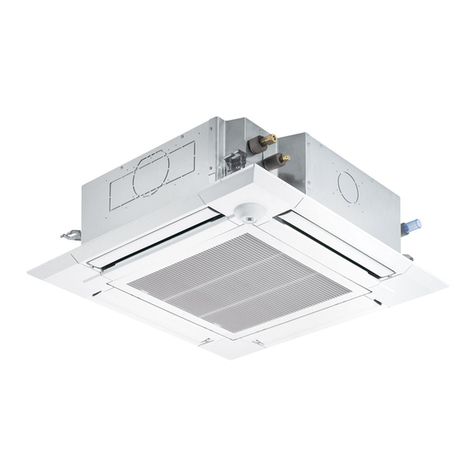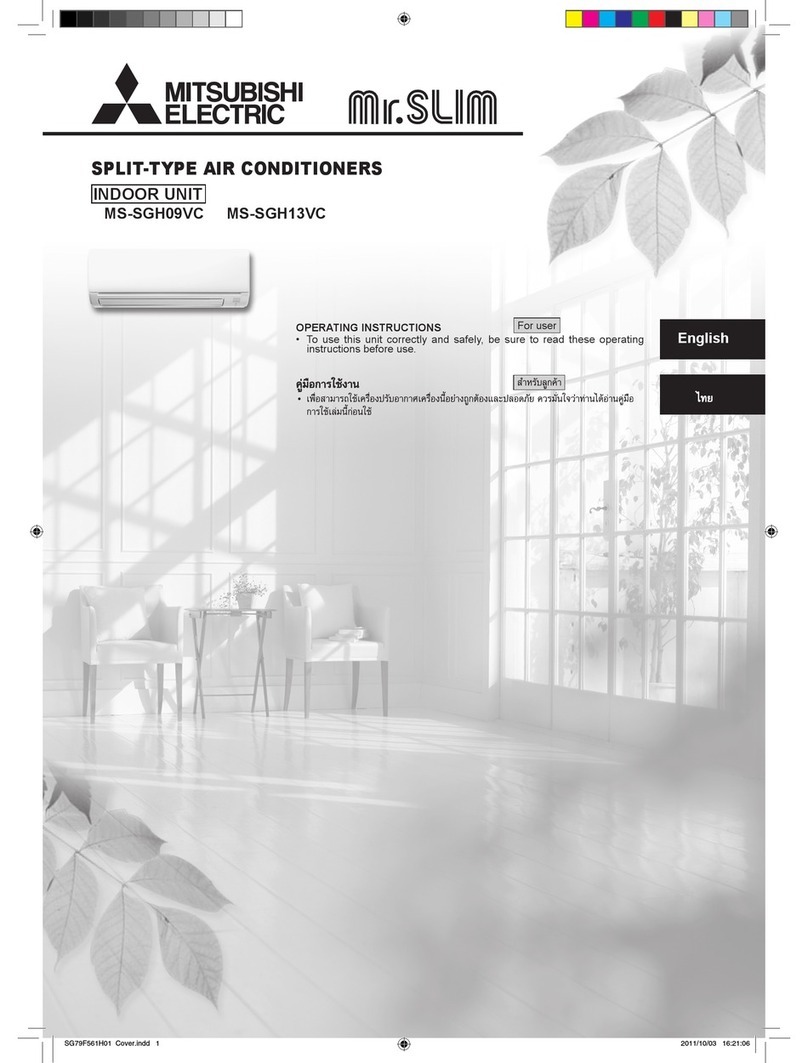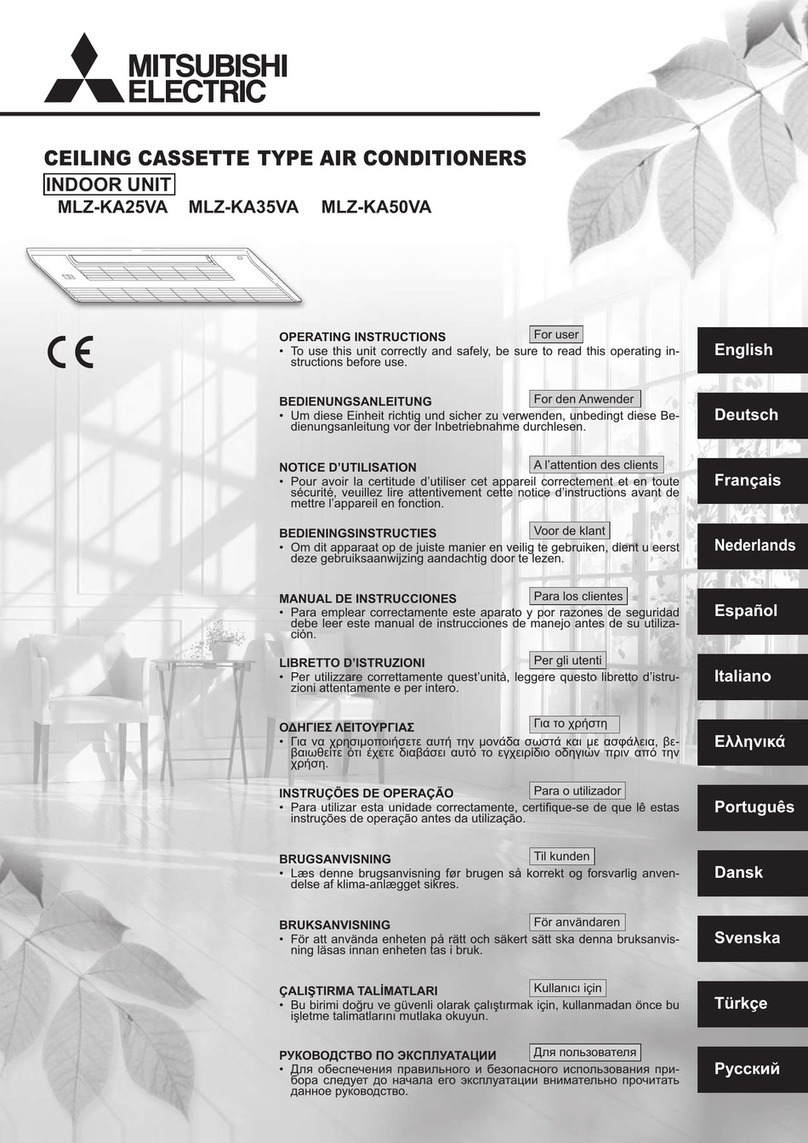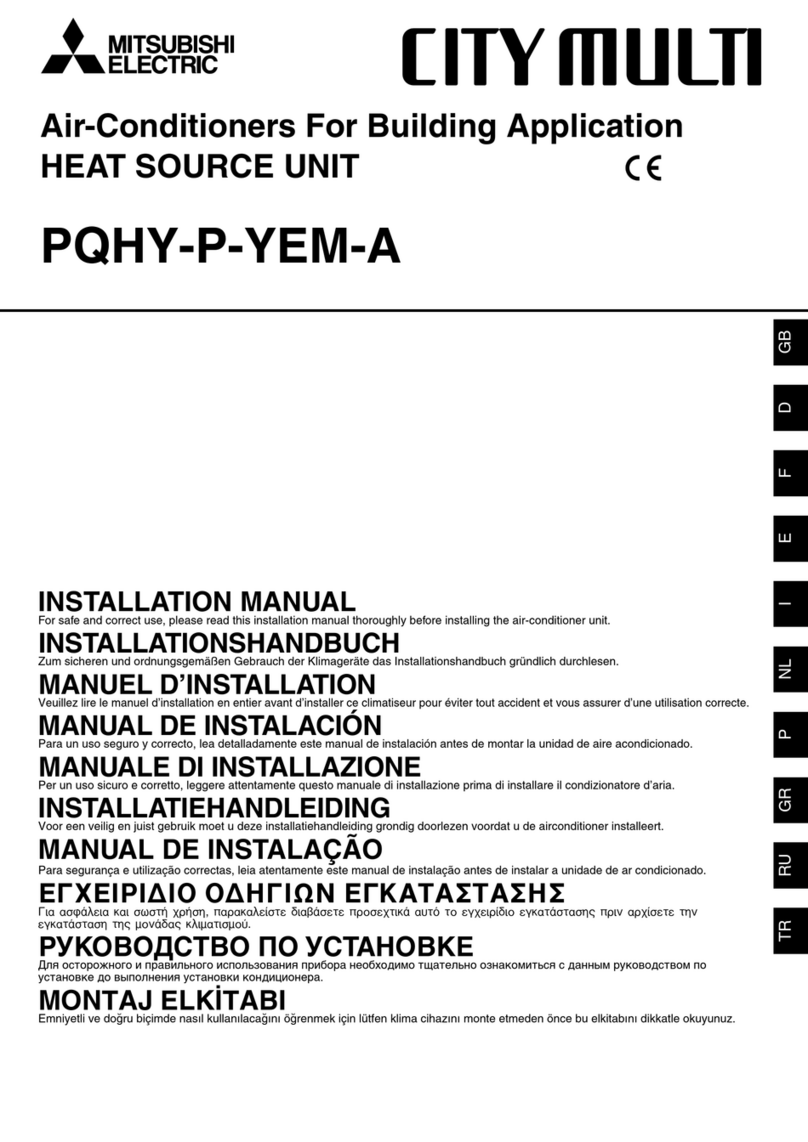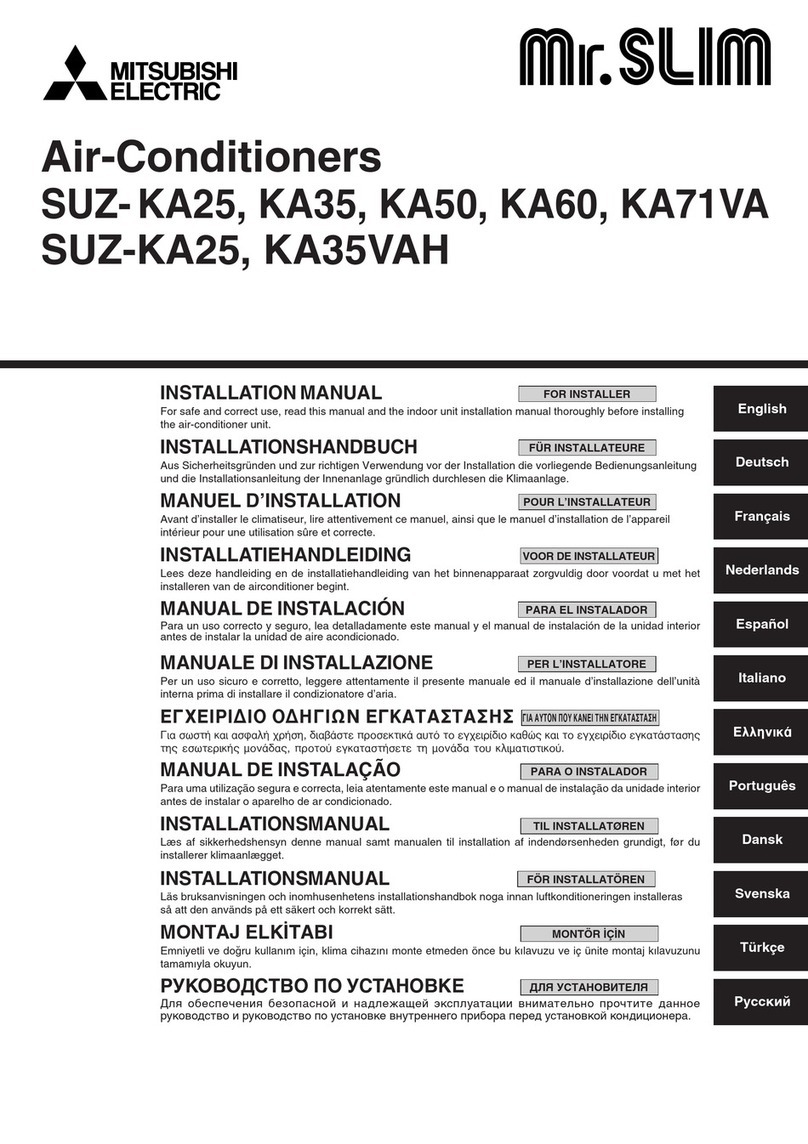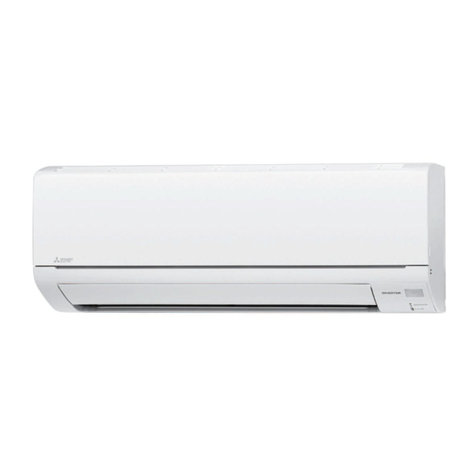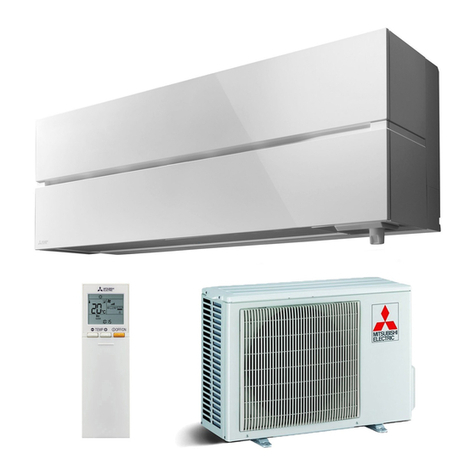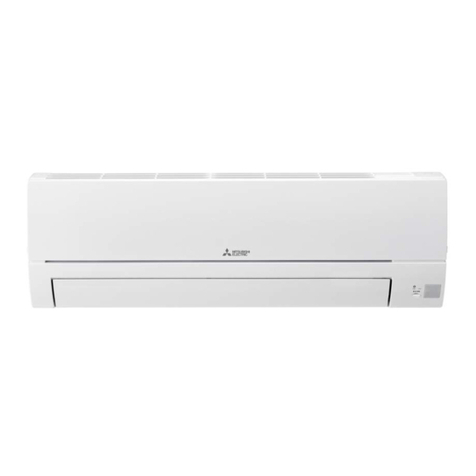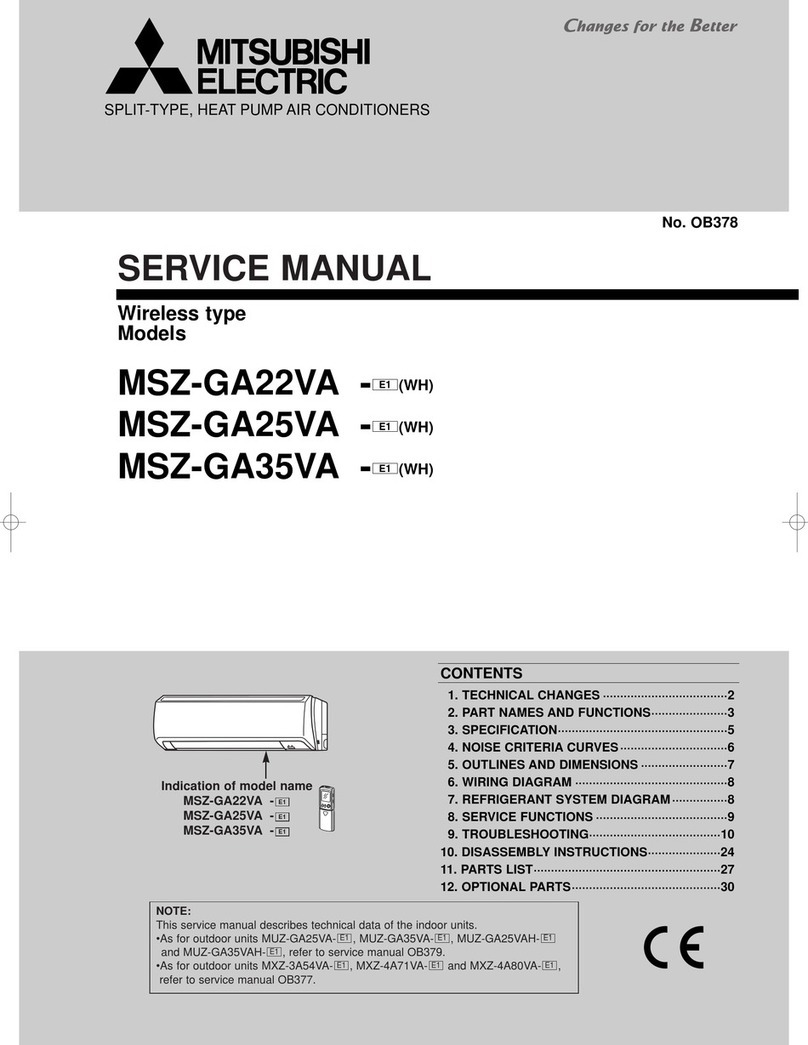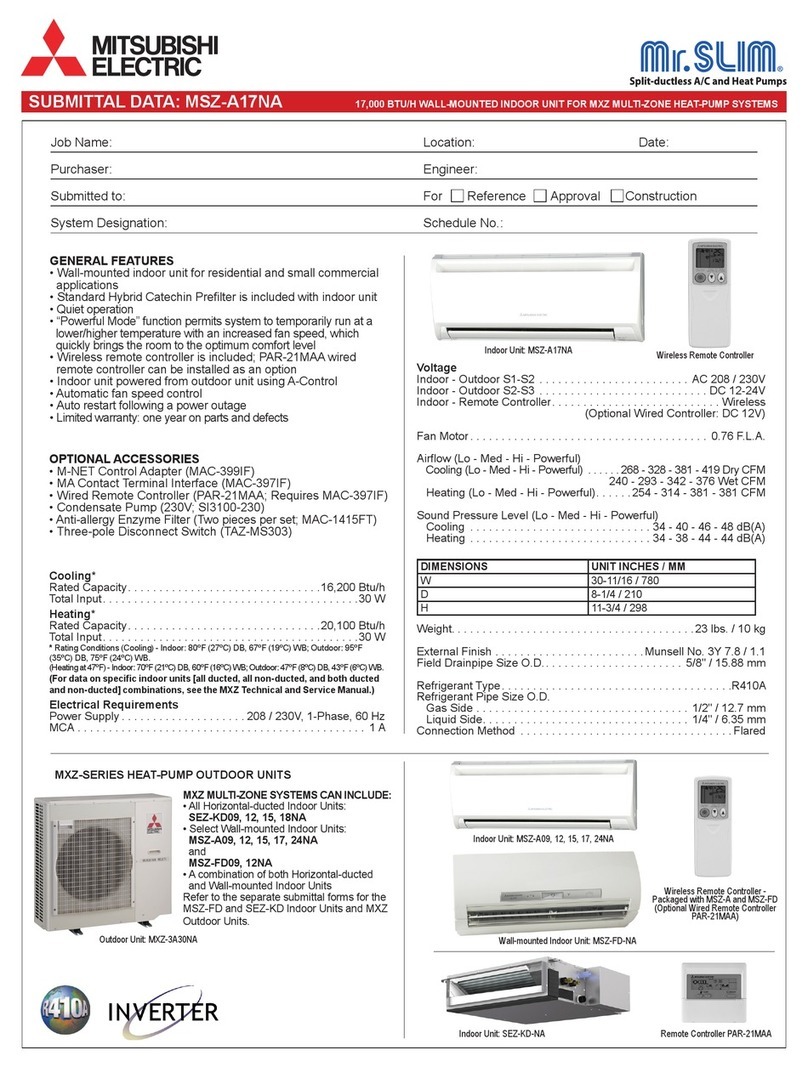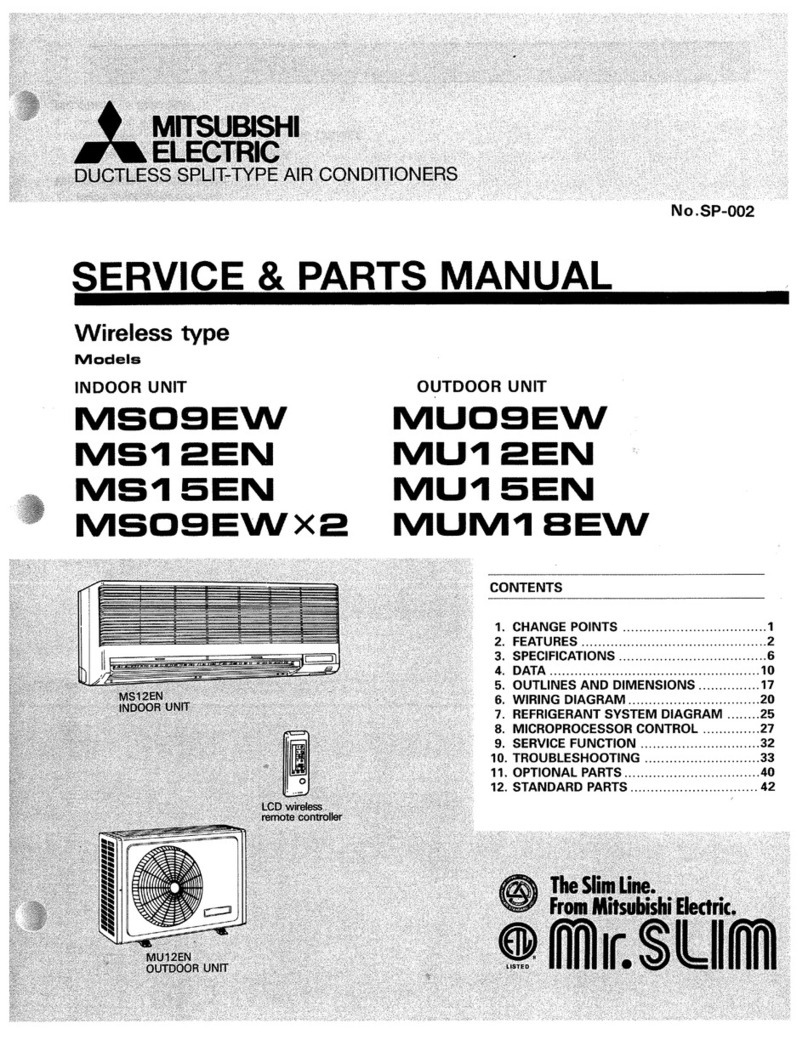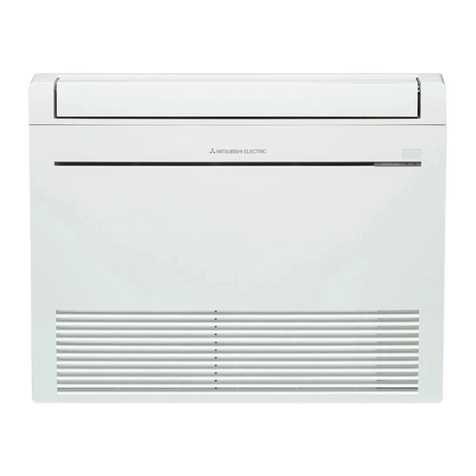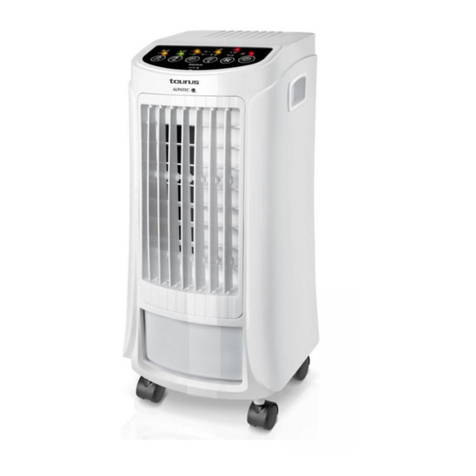
1
1. BEFORE INSTALLATION
Required Tools for Installation
ENGLISH
CONTENTS
1. BEFORE INSTALLATION ............................................................1
2. OUTDOOR UNIT INSTALLATION ...............................................7
3. FLARING WORK AND PIPE CONNECTION...............................8
4. PURGING PROCEDURES, LEAK TEST, AND TEST RUN.........9
5. PUMPING DOWN......................................................................12
1-1. THE FOLLOWING SHOULD ALWAYS BE OBSERVED FOR SAFETY
• Be sure to read “THE FOLLOWING SHOULD ALWAYS BE OBSERVED FOR SAFETY” before installing the air conditioner.
• Besuretoobservethewarningsandcautionsspeciedhereastheyincludeimportantitemsrelatedtosafety.
• After reading this manual, be sure to keep it together with the OPERATING INSTRUCTIONS for future reference.
• Equipment complying with IEC/EN 61000-3-12.
nDo not install the unit by yourself (user).
Incompleteinstallationcouldcausereorelectricshock,injuryduetotheunit
falling, or leakage of water. Consult the dealer from whom you purchased the unit
oraqualiedinstaller.
nPerform the installation securely referring to the installation manual.
Incompleteinstallationcouldcausere,electricshock,injuryduetotheunitfalling,
or leakage of water.
nWhen installing the unit, use appropriate protective equipment and tools
for safety.
Failuretodosocouldcauseinjury.
nInstall the unit securely in a place which can bear the weight of the unit.
If the installation location cannot bear the weight of the unit, the unit could fall
causinginjury.
n Electricalworkshouldbeperformedbyaqualied,experiencedelectrician,
accordingtotheinstallationmanual.Besuretouseanexclusivecircuit.Do
not connect other electrical appliances to the circuit.
Ifthecapacityofthepowercircuitisinsucientorthereisincompleteelectrical
work,itcouldresultinareoranelectricshock.
n Do not damage the wires by applying excessive pressure with parts or
screws.
Damagedwirescouldcausereorelectricshock.
n BesuretocutothemainpowerincaseofsettinguptheindoorP.C.board
or wiring works.
Failure to do so could cause electric shock.
n Usethespeciedwirestoconnecttheindoorandoutdoorunitssecurely
andattachthewiresrmlytotheterminalblockconnectingsectionssothe
stressofthewiresisnotappliedtothesections.Donotextendthewires,
or use intermediate connection.
Incompleteconnectingandsecuringcouldcausere.
n Donotinstalltheunitinaplacewhereinammablegasmayleak.
If gas leaks and accumulates in the area around the unit, it could cause an explo-
sion.
n Donotuseintermediateconnectionofthepowercordortheextensioncord
and do not connect many devices to one AC outlet.
Itcouldcauseareoranelectricshockduetodefectivecontact,defectiveinsula-
tion, exceeding the permissible current, etc.
n Besuretousethepartsprovidedorspeciedpartsfortheinstallationwork.
Theuseofdefectivepartscouldcauseaninjuryorleakageofwaterduetoare,
an electric shock, the unit falling, etc.
nWhen plugging the power supply plug into the outlet, make sure that there
is no dust, clogging, or loose parts in both the outlet and the plug. Make
sure that the power supply plug is pushed completely into the outlet.
If there is dust, clogging, or loose parts on the power supply plug or the outlet, it
couldcauseelectricshockorre.Ifloosepartsarefoundonthepowersupply
plug, replace it.
nAttach the electrical cover to the indoor unit and the service panel to the
outdoor unit securely.
If the electrical cover of the indoor unit and/or the service panel of the outdoor
unitarenotattachedsecurely,itcouldresultinareoranelectricshockdueto
dust, water, etc.
nWhen installing, relocating, or servicing the unit, make sure that no sub-
stanceotherthanthespeciedrefrigerant(R32)enterstherefrigerantcircuit.
Any presence of foreign substance such as air can cause abnormal pressure
riseandmayresultinexplosionorinjury.Theuseofanyrefrigerantotherthan
thatspeciedforthesystemwillcausemechanicalfailure,systemmalfunction,
or unit breakdown. In the worst case, this could lead to a serious impediment to
securing product safety.
nDo not discharge the refrigerant into the atmosphere. If refrigerant leaks
during installation, ventilate the room. Check that the refrigerant does not
leak after installation has been completed.
Ifrefrigerantleaksandcomesincontactwithreorheatingpartofsuchafan
heater, kerosene heater, or cooking stove, it will create harmful gas. Provide
ventilation in accordance with EN378-1.
nCheck that the refrigerant gas does not leak after installation has been
completed.
Ifrefrigerantgasleaksindoors,andcomesintocontactwiththeameofafan
heater, space heater, stove, etc., harmful substances will be generated.
nUse appropriate tools and piping materials for installation.
The pressure of R32 is 1.6 times more than R22. Not using appropriate tools or
materialsandincompleteinstallationcouldcausethepipestoburstorinjury.
nWhen pumping down the refrigerant, stop the compressor before discon-
necting the refrigerant pipes.
If the refrigerant pipes are disconnected while the compressor is running and the
stopvalveisopen, aircould bedrawninandthepressureintherefrigerationcycle
couldbecomeabnormallyhigh.Thiscouldcausethepipestoburstorinjury.
nWhen installing the unit, securely connect the refrigerant pipes before start-
ing the compressor.
If the compressor is started before the refrigerant pipes are connected and when
the stop valve is open, air could be drawn in and the pressure in the refrigeration
cyclecouldbecomeabnormallyhigh.Thiscouldcausethepipestoburstorinjury.
n Fastenaarenutwithatorquewrenchasspeciedinthismanual.
Iffastenedtootight,aarenutmaybreakafteralongperiodandcauserefrigerant
leakage.
nThe unit shall be installed in accordance with national wiring regulations.
nEarth the unit correctly.
Do not connect the earth to a gas pipe, water pipe, lightning rod or telephone
earth. Defective earthing could cause electric shock.
nBe sure to install an earth leakage breaker.
Failuretoinstallanearthleakagebreakermayresultinelectricshockorre.
n Whenusingagasburnerorotherame-producingequipment,completely
remove all of the refrigerant from the air conditioner and ensure that the
area is well-ventilated.
Iftherefrigerantleaksandcomesincontactinreorheatingpart,itwillcreate
harmfulgasandthereisriskofre.
nDo not use means to accelerate the defrosting process or to clean, other
than those recommended by the manufacturer.
nThe appliance shall be stored in a room without continuously operating
ignitionsources(forexample:openames,anoperatinggasapplianceor
an operating electric heater).
nDo not pierce or burn.
nBe aware that refrigerants may not contain an odour.
nPipe-work shall be protected from physical damage.
nThe installation of pipe-work shall be kept to a minimum.
nCompliance with national gas regulations shall be observed.
nKeep any required ventilation openings clear of obstruction.
nDo not use low temperature solder alloy in case of brazing the refrigerant
pipes.
nServicing shall be performed only as recommended by the manufacturer.
n Donotaltertheunit.Itmaycausere,electricshock,injuryorwaterleakage.
nWhen opening or closing the valve below freezing temperatures, refrigerant
may spurt out from the gap between the valve stem and the valve body,
resultingininjuries.
WARNING (Couldleadtodeath,seriousinjury,etc.)
MEANINGS OF SYMBOLS DISPLAYED ON INDOOR UNIT AND/OR OUTDOOR UNIT
WARNING
(Riskofre)
Thisunitusesaammablerefrigerant.
Ifrefrigerantleaksandcomesincontactwithreorheatingpart,itwillcreateharmfulgasandthereisriskofre.
Read the OPERATING INSTRUCTIONS carefully before operation.
Service personnel are required to carefully read the OPERATING INSTRUCTIONS and INSTALLATION MANUAL before operation.
Further information is available in the OPERATING INSTRUCTIONS, INSTALLATION MANUAL, and the like.
Phillips screwdriver
Level
Scale
Utility knife or scissors
Torque wrench
Wrench(orspanner)
4 mm hexagonal wrench
Flare tool for R32, R410A
Gauge manifold for R32, R410A
Vacuum pump for R32, R410A
Charge hose for R32, R410A
Pipe cutter with reamer
WG79A820H01_2nd.indd 1 2020/04/08 13:36:19

